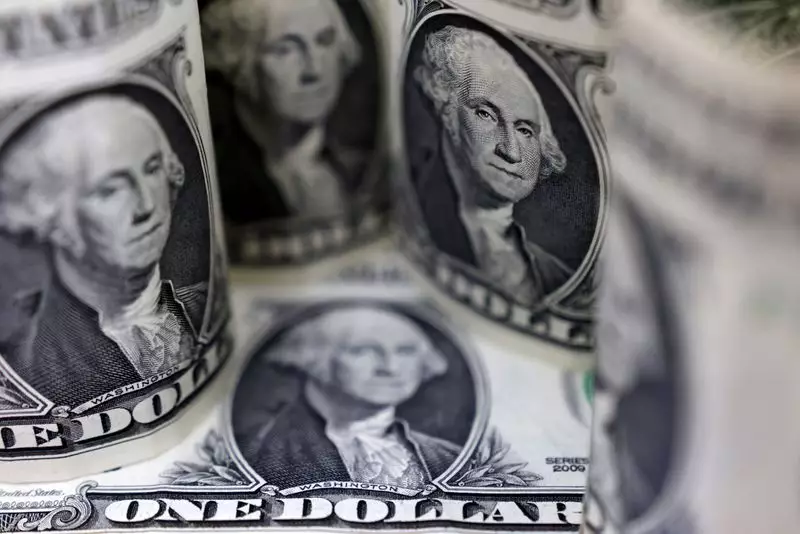The U.S. dollar saw a rise on Tuesday, marking a reversal of some of the recent losses experienced by the currency. After hitting a seven-month low, the Dollar Index, which measures the greenback against six other major currencies, traded 0.4% higher at 102.907. This shift comes after a period of instability and uncertainty in the foreign exchange markets.
Recent weak readings on the U.S. labor market have sparked fears of a potential recession, leading to a significant impact on the U.S. dollar. Traders have begun anticipating further rate cuts by the Federal Reserve, with expectations of up to 110 basis points of easing within the year. This has led to the pricing in of an 80% chance of a 50 bps cut in September, following full pricing of a 50 bps cut on Monday. The Federal Reserve is now under pressure to take action to prevent an economic downturn.
The strengthening of the U.S. dollar has had global repercussions, particularly in Europe and Asia. In Europe, both the euro and sterling have felt the effects of the dollar’s rise, with the European Central Bank and the Bank of England cutting interest rates to stimulate their respective economies. EUR/USD fell 0.4% to 1.0911, while GBP/USD slipped 0.5% to 1.2706 as the dollar gained strength.
In Asia, USD/JPY rose 0.2% to 144.47 as the yen weakened for the first time in the month. The Bank of Japan’s hawkish signals, along with increased safe haven demand, played a role in the yen’s recent performances in the face of global economic uncertainty. USD/CNY also saw a rise of 0.3% to 7.1504 as the yuan weakened in anticipation of key trade and inflation data.
Central banks around the world have been closely monitoring the situation as they consider their next steps. Australia’s central bank, for example, decided to hold interest rates steady on Tuesday as expected, emphasizing their commitment to controlling inflation. In contrast, the Bank of England had already cut interest rates by a quarter-point to 5%, joining a series of global efforts to maintain economic stability amidst rising uncertainties.
The recent movements in the U.S. dollar reflect broader economic concerns and uncertainties on a global scale. The impact on various currencies and central bank responses highlight the interconnectedness of financial markets and the need for careful monitoring and strategic decision-making in the face of economic challenges. As the situation continues to evolve, it is essential for investors and policymakers alike to stay vigilant and adaptive to ensure sustainable growth and stability in the global economy.

